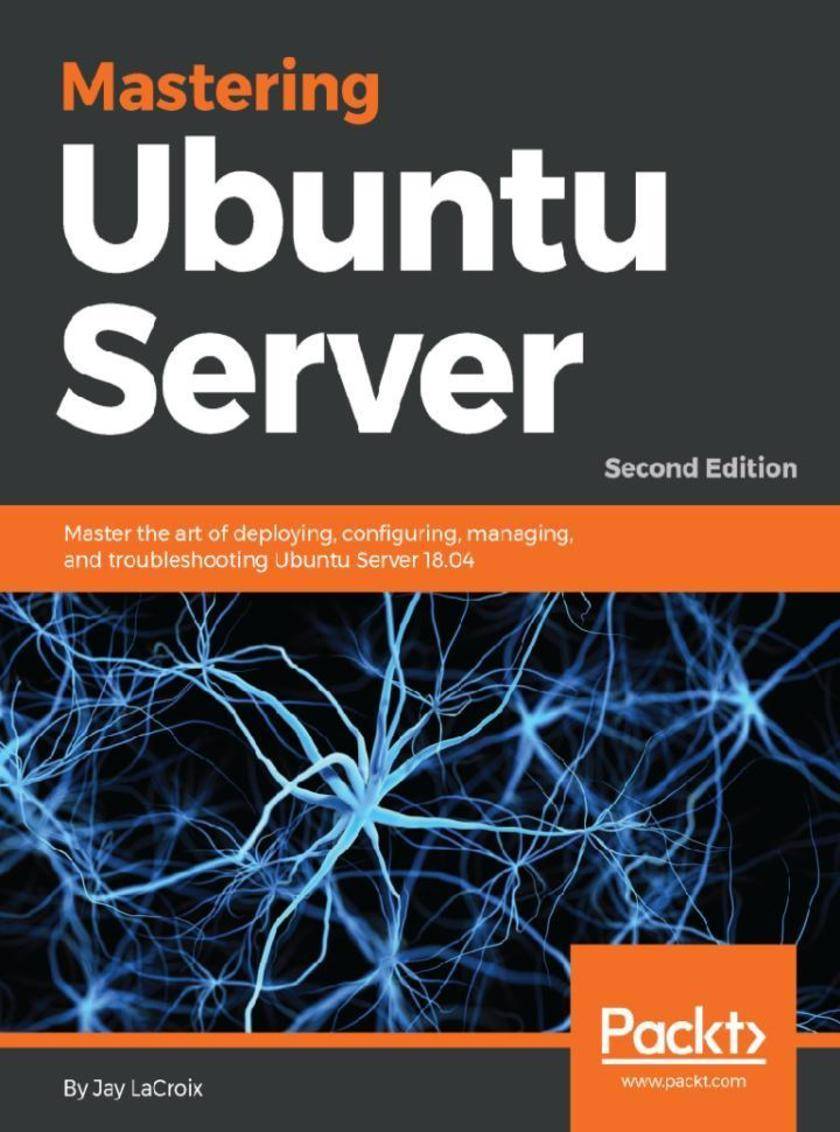
Mastering Ubuntu Server
¥81.74
Get up-to-date with the finer points of Ubuntu Server using this comprehensive guide About This Book ? A practical easy-to-understand book that will teach you how to deploy, maintain and troubleshoot Ubuntu Server ? Get well-versed with newly-added features in Ubuntu 18.04. ? Learn to manage cutting-edge technologies such as virtualization, containers, Nextcloud and more Who This Book Is For This book is intended for readers with intermediate or advanced-beginner skills with Linux, who would like to learn all about setting up servers with Ubuntu Server. This book assumes that the reader knows the basics of Linux, such as editing configuration files and running basic commands. What You Will Learn ? Manage users, groups, and permissions ? Encrypt and decrypt disks with Linux Unified Key Setup (LUKS) ? Set up SSH for remote access, and connect it to other nodes ? Add, remove, and search for packages ? Use NFS and Samba to share directories with other users ? Get to know techniques for managing Apache and MariaDB ? Explore best practices and troubleshooting techniques ? Get familiar with scripting ? Automate server deployments with Ansible In Detail Ubuntu Server has taken the data centers by storm. Whether you're deploying Ubuntu for a large-scale project or for a small office, it is a stable, customizable, and powerful Linux distribution that leads the way with innovative and cutting-edge features. For both simple and complex server deployments, Ubuntu's flexible nature can be easily adapted to meet to the needs of your organization. With this book as your guide, you will learn all about Ubuntu Server, from initial deployment to creating production-ready resources for your network. The book begins with the concept of user management, group management, and filesystem permissions. Continuing into managing storage volumes, you will learn how to format storage devices, utilize logical volume management, and monitor disk usage. Later, you will learn how to virtualize hosts and applications, which will cover setting up KVM/QEMU, as well as containerization with both Docker and LXD. As the book continues, you will learn how to automate configuration with Ansible, as well as take a look at writing scripts. Lastly, you will explore best practices and troubleshooting techniques when working with Ubuntu Server that are applicable to real-world scenarios. By the end of the book, you will be an expert Ubuntu Server administrator who is well-versed in its advanced concepts. Style and approach This book is an advanced guide that will show readers how to administer, manage, and deploy Ubuntu server and will also provide expert-level knowledge on advanced security and backup techniques.

Embedded Systems Architecture
¥81.74
Learn to design and develop safe and reliable embedded systems About This Book ? Identify and overcome challenges in embedded environments ? Understand the steps required to increase the security of IoT solutions ? Build safety-critical and memory-safe parallel and distributed embedded systems Who This Book Is For If you’re a software developer or designer wanting to learn about embedded programming, this is the book for you. You’ll also find this book useful if you’re a less experienced embedded programmer willing to expand your knowledge. What You Will Learn ? Participate in the design and definition phase of an embedded product ? Get to grips with writing code for ARM Cortex-M microcontrollers ? Build an embedded development lab and optimize the workflow ? Write memory-safe code ? Understand the architecture behind the communication interfaces ? Understand the design and development patterns for connected and distributed devices in the IoT ? Master multitask parallel execution patterns and real-time operating systems In Detail Embedded systems are self-contained devices with a dedicated purpose. We come across a variety of fields of applications for embedded systems in industries such as automotive, telecommunications, healthcare and consumer electronics, just to name a few. Embedded Systems Architecture begins with a bird's eye view of embedded development and how it differs from the other systems that you may be familiar with. You will first be guided to set up an optimal development environment, then move on to software tools and methodologies to improve the work flow. You will explore the boot-up mechanisms and the memory management strategies typical of a real-time embedded system. Through the analysis of the programming interface of the reference microcontroller, you'll look at the implementation of the features and the device drivers. Next, you'll learn about the techniques used to reduce power consumption. Then you will be introduced to the technologies, protocols and security aspects related to integrating the system into IoT solutions. By the end of the book, you will have explored various aspects of embedded architecture, including task synchronization in a multi-threading environment, and the safety models adopted by modern real-time operating systems. Style and approach Software developers and designers with experience in different fields, and who want to learn about embedded programming, will benefit from this book. Junior and less experienced embedded programmers willing to expand their knowledge in the field will also find it useful.
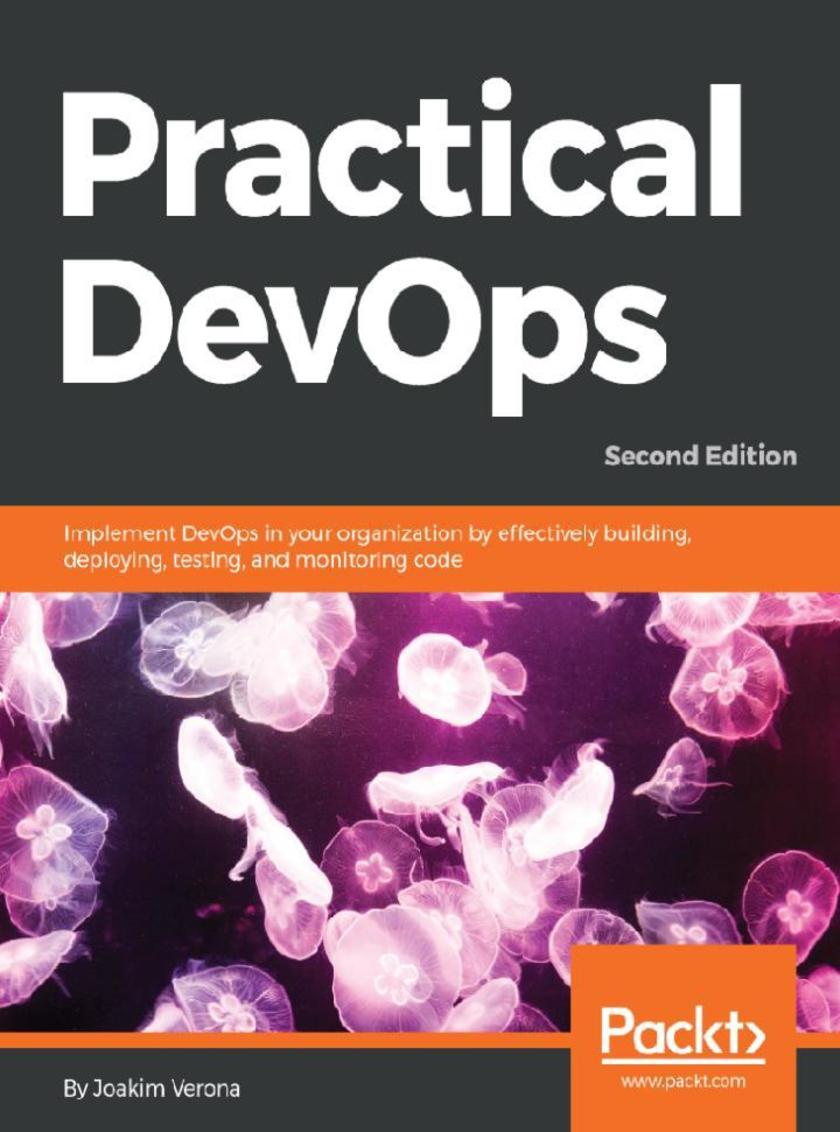
Practical DevOps
¥81.74
Understand the benefits of DevOps and continuous delivery and see how they support the agile software development process About This Book ? Learn how DevOps can accelerate your entire software development life cycle ? Improve your organization's performance to ensure the smooth production of software and services ? Get hands-on experience in using efficient DevOps tools to better effect Who This Book Is For If you're a developer or system administrator looking to take on larger responsibilities and understand how the infrastructure that builds today's enterprises works, this is the book for you. This book will also help you greatly if you're an operations worker who would like to better support developers. You do not need any previous knowledge of DevOps to understand the concepts in this book. What You Will Learn ? Understand how all deployment systems fit together to form a larger system ? Set up and familiarize yourself with all the tools you need to be efficient with DevOps ? Design an application suitable for continuous deployment systems with DevOps in mind ? Store and manage your code effectively using Git, Gerrit, Gitlab, and more ? Configure a job to build a sample CRUD application ? Test your code using automated regression testing with Jenkins Selenium ? Deploy your code using tools such as Puppet, Ansible, Palletops, Chef, and Vagrant In Detail DevOps is a practical field that focuses on delivering business value as efficiently as possible. DevOps encompasses all code workflows from testing environments to production environments. It stresses cooperation between different roles, and how they can work together more closely, as the roots of the word imply—Development and Operations. Practical DevOps begins with a quick refresher on DevOps and continuous delivery and quickly moves on to show you how DevOps affects software architectures. You'll create a sample enterprise Java application that you’'ll continue to work with through the remaining chapters. Following this, you will explore various code storage and build server options. You will then learn how to test your code with a few tools and deploy your test successfully. In addition to this, you will also see how to monitor code for any anomalies and make sure that it runs as expected. Finally, you will discover how to handle logs and keep track of the issues that affect different processes. By the end of the book, you will be familiar with all the tools needed to deploy, integrate, and deliver efficiently with DevOps. Style and approach This book is primarily a technical guide to DevOps with practical examples suitable for people who like to learn by implementing concrete working code.
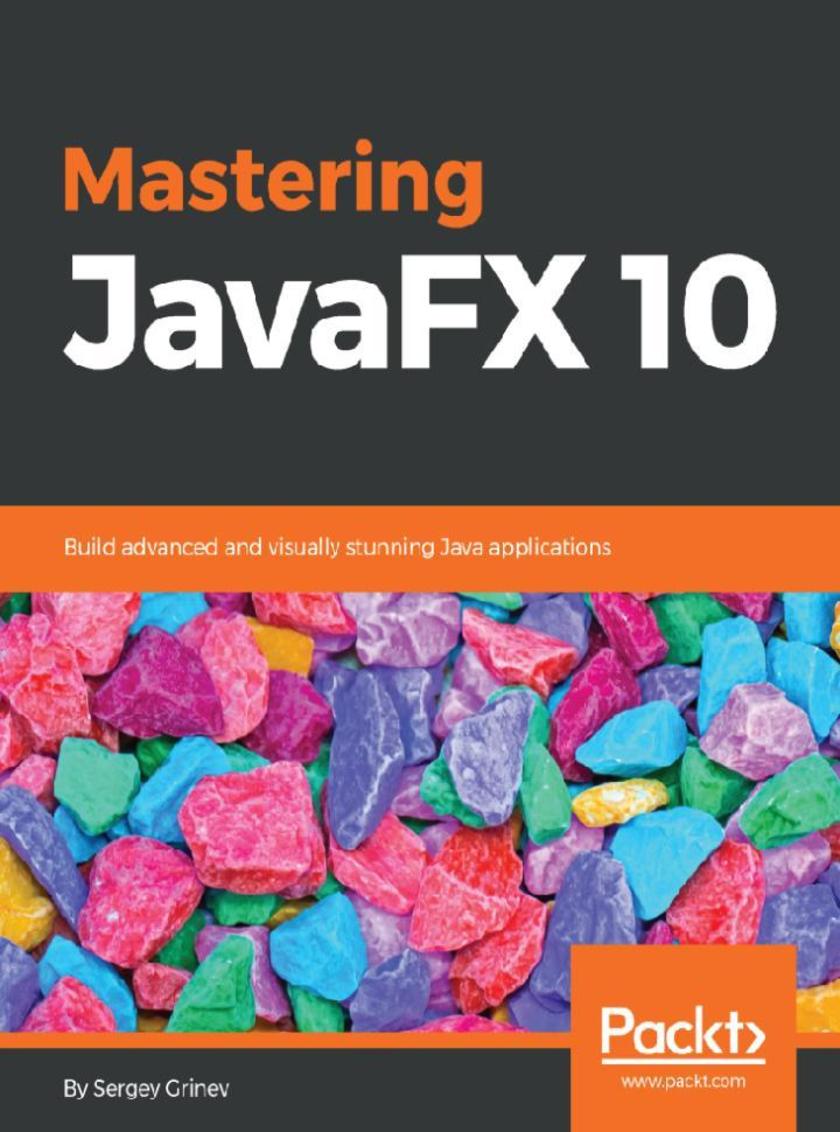
Mastering JavaFX 10
¥81.74
Design modern, rich interfaces for Java apps using JavaFX 10 About This Book ? Become a pro with the latest JavaFX 10 framework ? Create dynamic content using the animation API ? Create and customize plugins and use them efficiently in different applications Who This Book Is For If you’re a Java developer who wants to upgrade to the latest version of JavaFX to create stunning, feature-rich graphical applications, this book is for you. What You Will Learn ? Construct and customize JavaFX windows ? Manage UI elements and arrange them on the Scene ? Explore the Bindings API and use it to coordinate various UI elements ? Use FXML to design amazing FX applications ? Write and manage CSS to style your applications ? Add audio and video to your projects ? Prepare your application to be launched on the target platform In Detail JavaFX 10 is used to create media-rich client applications. This book takes you on a journey to use JavaFX 10 to build applications that display information in a high-performance, modern user interface featuring audio, video, graphics, and animation. Mastering JavaFX 10 begins by introducing you to the JavaFX API. You will understand the steps involved in setting up your development environment and build the necessary dependencies. This is followed by exploring how to work with the assets, modules, and APIs of JavaFX. This book is filled with practical examples to guide you through the major features of JavaFX 10. In addition to this, you will acquire a practical understanding of JavaFX custom animations, merging different application layers smoothly, and creating a user-friendly GUI with ease. By the end of the book, you will be able to create a complete, feature-rich Java graphical application using JavaFX. Style and approach The book adopts a practical, step-by-step approach.
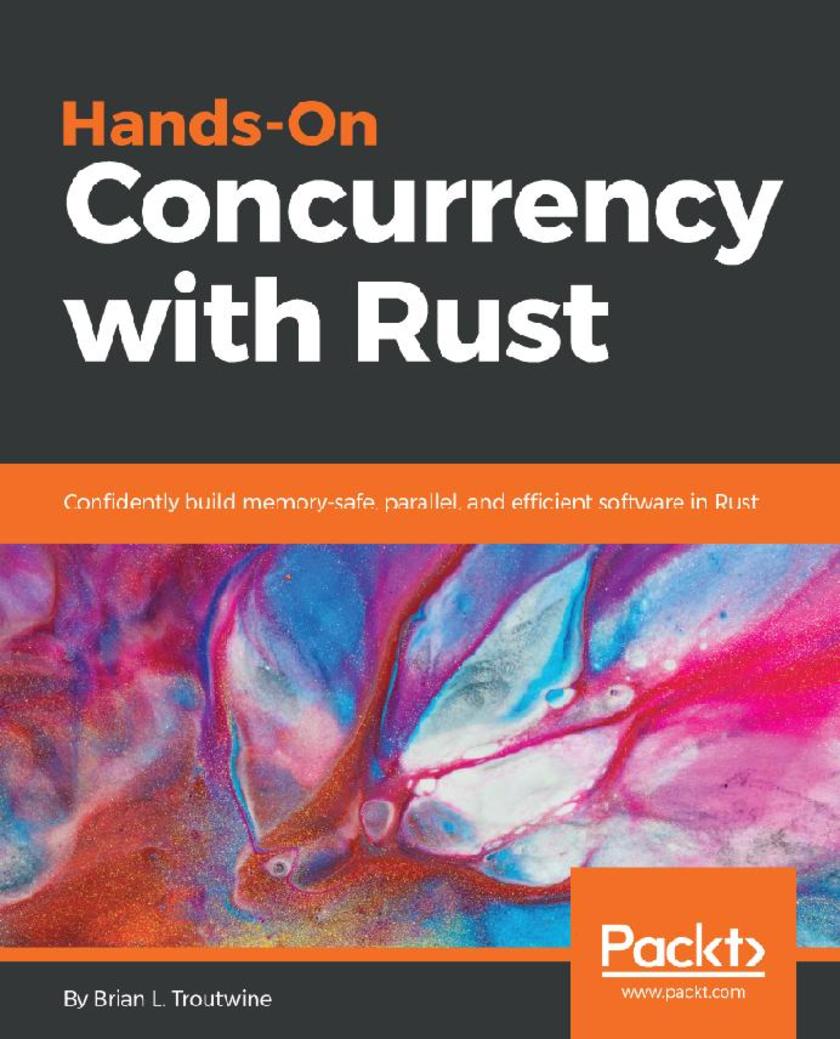
Hands-On Concurrency with Rust
¥81.74
Get to grips with modern software demands by learning the effective uses of Rust's powerful memory safety. About This Book ? Learn and improve the sequential performance characteristics of your software ? Understand the use of operating system processes in a high-scale concurrent system ? Learn of the various coordination methods available in the Standard library Who This Book Is For This book is aimed at software engineers with a basic understanding of Rust who want to exploit the parallel and concurrent nature of modern computing environments, safely. What You Will Learn ? Probe your programs for performance and accuracy issues ? Create your own threading and multi-processing environment in Rust ? Use coarse locks from Rust’s Standard library ? Solve common synchronization problems or avoid synchronization using atomic programming ? Build lock-free/wait-free structures in Rust and understand their implementations in the crates ecosystem ? Leverage Rust’s memory model and type system to build safety properties into your parallel programs ? Understand the new features of the Rust programming language to ease the writing of parallel programs In Detail Most programming languages can really complicate things, especially with regard to unsafe memory access. The burden on you, the programmer, lies across two domains: understanding the modern machine and your language's pain-points. This book will teach you to how to manage program performance on modern machines and build fast, memory-safe, and concurrent software in Rust. It starts with the fundamentals of Rust and discusses machine architecture concepts. You will be taken through ways to measure and improve the performance of Rust code systematically and how to write collections with confidence. You will learn about the Sync and Send traits applied to threads, and coordinate thread execution with locks, atomic primitives, data-parallelism, and more. The book will show you how to efficiently embed Rust in C++ code and explore the functionalities of various crates for multithreaded applications. It explores implementations in depth. You will know how a mutex works and build several yourself. You will master radically different approaches that exist in the ecosystem for structuring and managing high-scale systems. By the end of the book, you will feel comfortable with designing safe, consistent, parallel, and high-performance applications in Rust. Style and approach Readers will be taken through various ways to improve the performance of their Rust code.

Learn Microsoft Azure
¥81.74
Explore various Azure services to build solutions that leverage effective design patterns Key Features *Create, deploy, and host cloud applications on Azure *Understand various Azure services that help you host serverless applications *Explore practical examples to help you secure and troubleshoot your cloud environment Book Description Azure is one of the leading public cloud service providers. Thanks to a number of Azure service updates, it continues to make advances in the realm of cloud computing. Learn Microsoft Azure starts with the fundamentals of cloud computing. You will learn to configure and set up the Azure infrastructure. As you make your way through the book, you'll explore Azure services, along with working on virtual memory systems (VMS) and deployment models. You will understand various services in the Azure ecosystem, such as Azure IoT and Azure Analytics, among others. An easy-to-follow introduction to various cloud design patterns will also add to your efficiency in designing cloud solutions. In the concluding chapters, you'll secure your virtual networks using Network security groups and configure Azure Active Directory (Azure AD) to set a custom domain name and company profile. By the end of this book, you will have learned to secure and troubleshoot your Azure cloud environment and be fully aware of best practices for Azure cloud administration. What you will learn *Understand the cloud services offered by Azure *Design storage and networks in Azure for your Azure VM *Work with web apps and Azure SQL databases *Build your identity management solutions on Azure using Azure AD *Monitor, protect, and automate your Azure services using Operation Management Suite (OMS) *Implement OMS for Azure services Who this book is for Learn Microsoft Azure is for administrators, cloud engineers, and developers who want to get started with using Azure as their cloud platform and build cloud-based applications for their enterprises.
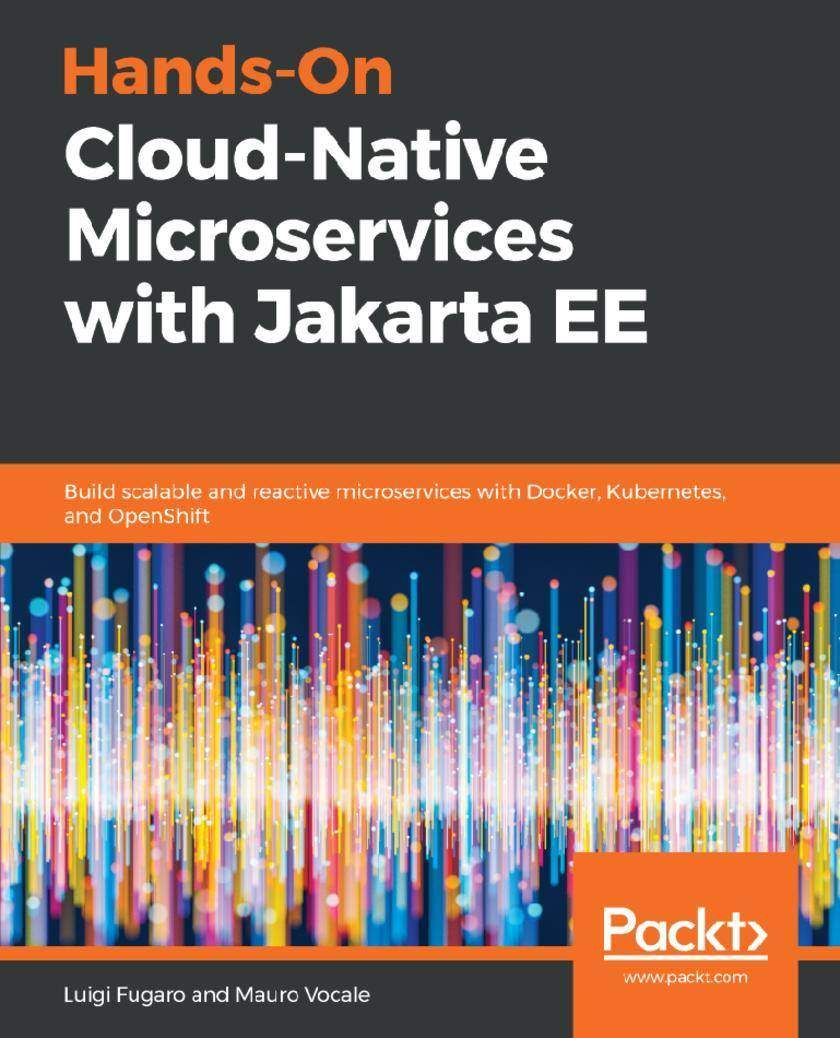
Hands-On Cloud-Native Microservices with Jakarta EE
¥81.74
Discover how cloud-native microservice architecture helps you to build dynamically scalable applications by using the most widely used and adopted runtime environments Key Features * Build robust cloud-native applications using a variety of tools * Understand how to configure both Amazon Web Services (AWS) and Docker clouds for high availability * Explore common design patterns used in building and deploying microservices architecture. Book Description Businesses today are evolving rapidly, and developers now face the challenge of building applications that are resilient, flexible, and native to the cloud. To achieve this, you'll need to be aware of the environment, tools, and resources that you're coding against. The book will begin by introducing you to cloud-native architecture and simplifying the major concepts. You'll learn to build microservices in Jakarta EE using MicroProfile with Thorntail and Narayana LRA. You'll then delve into cloud-native application x-rays, understanding the MicroProfile specification and the implementation/testing of microservices. As you progress further, you'll focus on continuous integration and continuous delivery, in addition to learning how to dockerize your services. You'll also cover concepts and techniques relating to security, monitoring, and troubleshooting problems that might occur with applications after you've written them. By the end of this book, you will be equipped with the skills you need to build highly resilient applications using cloud-native microservice architecture. What you will learn * Integrate reactive principles in MicroProfile microservices architecture * Explore the 12-factors-app paradigm and its implications * Get the best out of Java versions 8 and 9 to implement a microservice based on Thorntail * Understand what OpenShift is and why it is so important for an elastic architecture * Build a Linux container image using Docker and scale the application using Kubernetes * Implement various patterns such as, Circuit Breaker and bulkheads * Get to grips with the DevOps methodology using continuous integration (CI) and continuous deployment (CD) Who this book is for This book is for developers with basic knowledge of Java EE and HTTP-based application principles who want to learn how to build, test and scale Java EE microservices. No prior experience of writing microservices in Java EE is required.
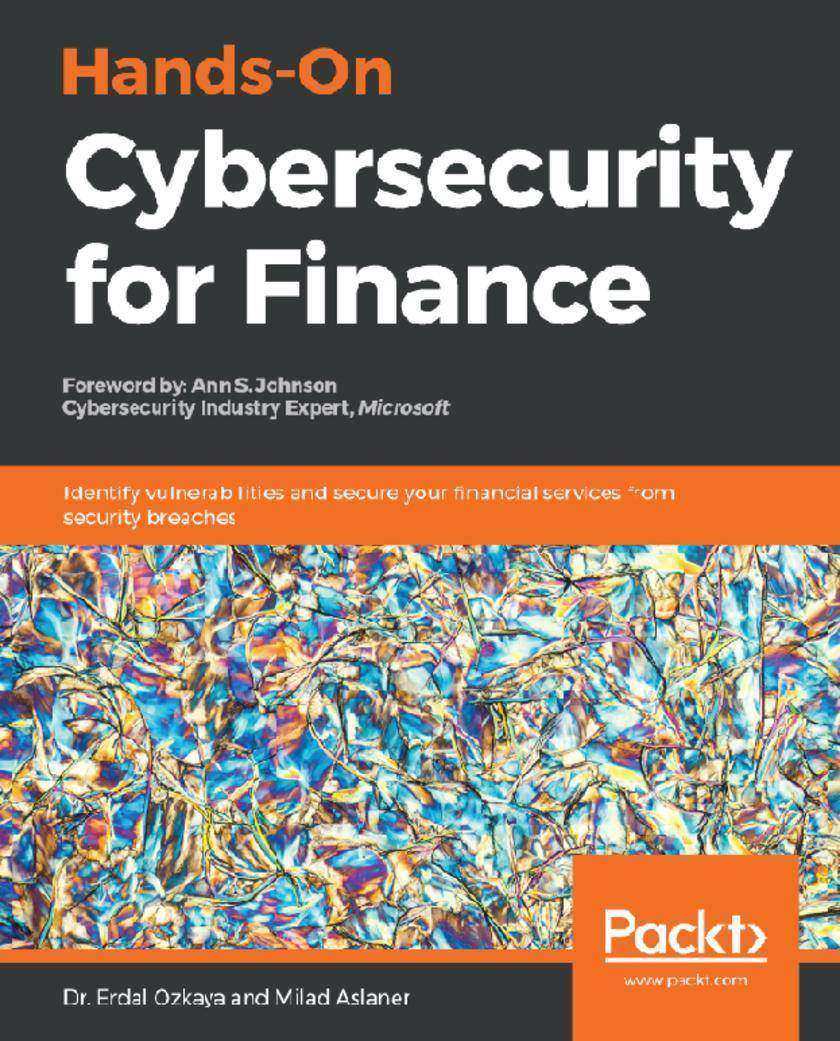
Hands-On Cybersecurity for Finance
¥81.74
A comprehensive guide that will give you hands-on experience to study and overcome financial cyber threats Key Features * Protect your financial environment with cybersecurity practices and methodologies * Identify vulnerabilities such as data manipulation and fraudulent transactions * Provide end-to-end protection within organizations Book Description Organizations have always been a target of cybercrime. Hands-On Cybersecurity for Finance teaches you how to successfully defend your system against common cyber threats, making sure your financial services are a step ahead in terms of security. The book begins by providing an overall description of cybersecurity, guiding you through some of the most important services and technologies currently at risk from cyber threats. Once you have familiarized yourself with the topic, you will explore specific technologies and threats based on case studies and real-life scenarios. As you progress through the chapters, you will discover vulnerabilities and bugs (including the human risk factor), gaining an expert-level view of the most recent threats. You'll then explore information on how you can achieve data and infrastructure protection. In the concluding chapters, you will cover recent and significant updates to procedures and configurations, accompanied by important details related to cybersecurity research and development in IT-based financial services. By the end of the book, you will have gained a basic understanding of the future of information security and will be able to protect financial services and their related infrastructures. What you will learn * Understand the cyber threats faced by organizations * Discover how to identify attackers * Perform vulnerability assessment, software testing, and pentesting * Defend your financial cyberspace using mitigation techniques and remediation plans * Implement encryption and decryption * Understand how Artificial Intelligence (AI) affects cybersecurity Who this book is for Hands-On Cybersecurity for Finance is for you if you are a security architect, cyber risk manager, or pentester looking to secure your organization. Basic understanding of cybersecurity tools and practices will help you get the most out of this book.
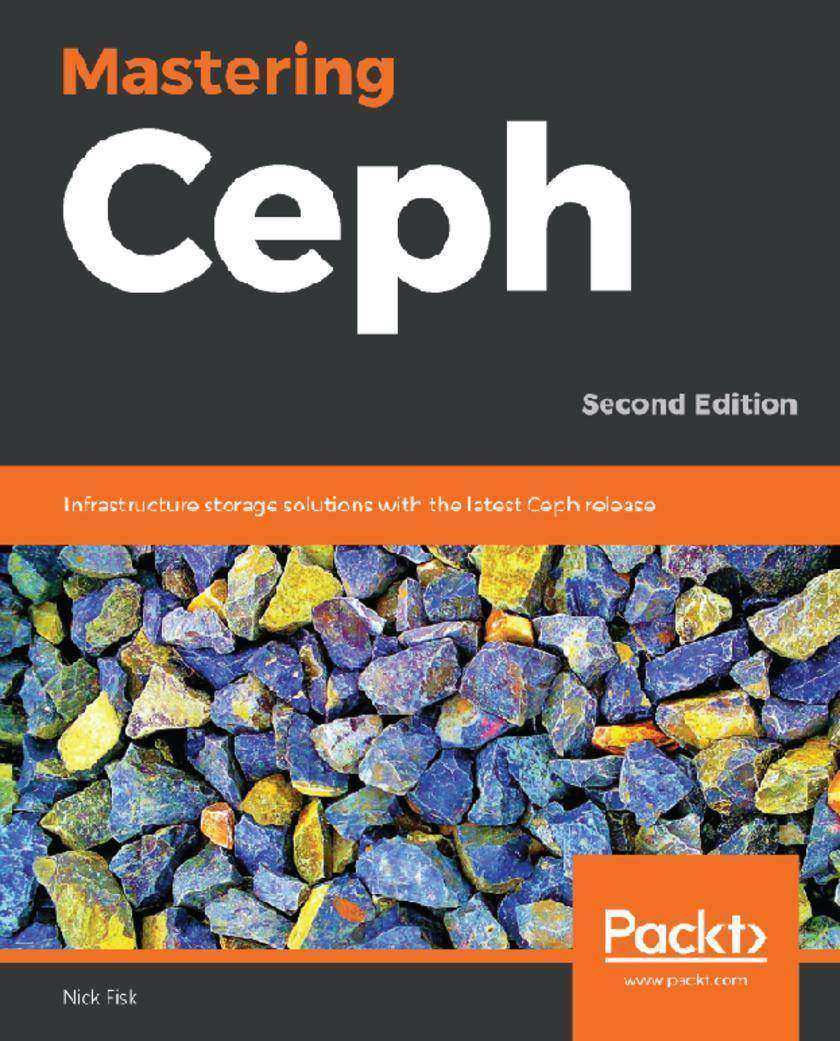
Mastering Ceph
¥81.74
Discover the unified, distributed storage system and improve the performance of applications Key Features * Explore the latest features of Ceph's Mimic release * Get to grips with advanced disaster and recovery practices for your storage * Harness the power of Reliable Autonomic Distributed Object Store (RADOS) to help you optimize storage systems Book Description Ceph is an open source distributed storage system that is scalable to Exabyte deployments. This second edition of Mastering Ceph takes you a step closer to becoming an expert on Ceph. You’ll get started by understanding the design goals and planning steps that should be undertaken to ensure successful deployments. In the next sections, you’ll be guided through setting up and deploying the Ceph cluster with the help of orchestration tools. This will allow you to witness Ceph’s scalability, erasure coding (data protective) mechanism, and automated data backup features on multiple servers. You’ll then discover more about the key areas of Ceph including BlueStore, erasure coding and cache tiering with the help of examples. Next, you’ll also learn some of the ways to export Ceph into non-native environments and understand some of the pitfalls that you may encounter. The book features a section on tuning that will take you through the process of optimizing both Ceph and its supporting infrastructure. You’ll also learn to develop applications, which use Librados and distributed computations with shared object classes. Toward the concluding chapters, you’ll learn to troubleshoot issues and handle various scenarios where Ceph is not likely to recover on its own. By the end of this book, you’ll be able to master storage management with Ceph and generate solutions for managing your infrastructure. What you will learn * Plan, design and deploy a Ceph cluster * Get well-versed with different features and storage methods * Carry out regular maintenance and daily operations with ease * Tune Ceph for improved ROI and performance * Recover Ceph from a range of issues * Upgrade clusters to BlueStore Who this book is for If you are a storage professional, system administrator, or cloud engineer looking for guidance on building powerful storage solutions for your cloud and on-premise infrastructure, this book is for you.
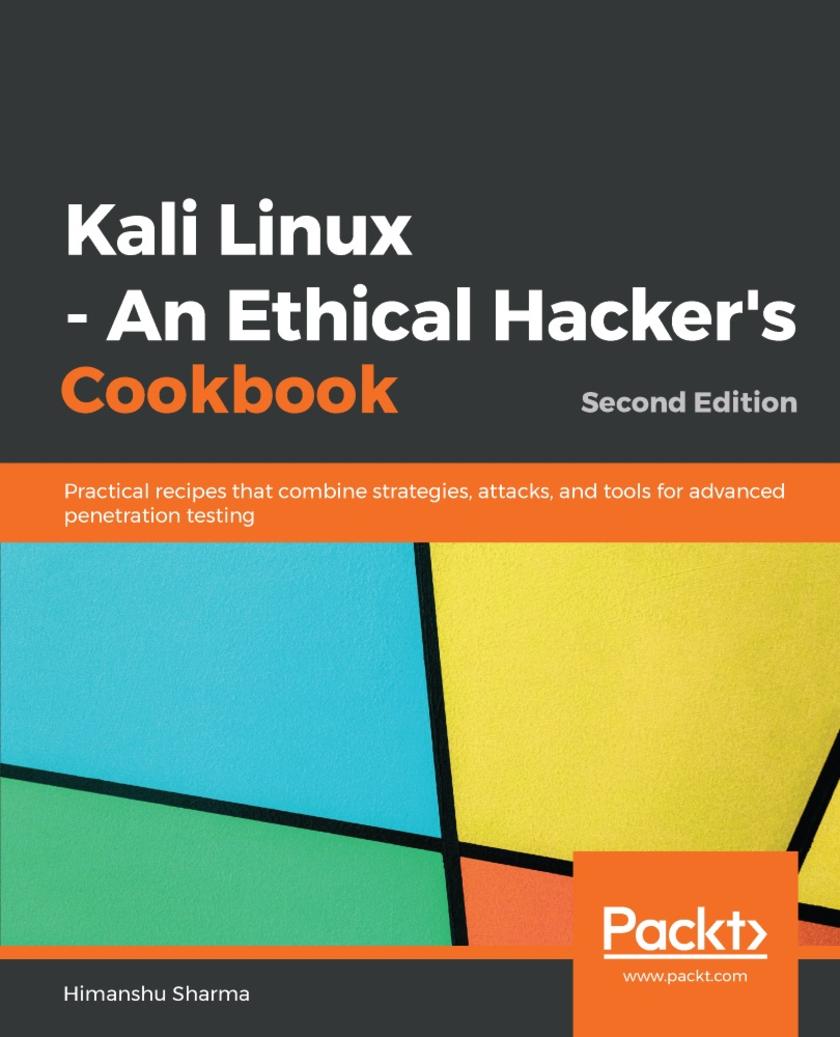
Kali Linux - An Ethical Hacker's Cookbook
¥81.74
Discover end-to-end penetration testing solutions to enhance your ethical hacking skills Key Features * Practical recipes to conduct effective penetration testing using the latest version of Kali Linux * Leverage tools like Metasploit, Wireshark, Nmap, and more to detect vulnerabilities with ease * Confidently perform networking and application attacks using task-oriented recipes Book Description Many organizations have been affected by recent cyber events. At the current rate of hacking, it has become more important than ever to pentest your environment in order to ensure advanced-level security. This book is packed with practical recipes that will quickly get you started with Kali Linux (version 2018.4 / 2019), in addition to covering the core functionalities. The book will get you off to a strong start by introducing you to the installation and configuration of Kali Linux, which will help you to perform your tests. You will also learn how to plan attack strategies and perform web application exploitation using tools such as Burp and JexBoss. As you progress, you will get to grips with performing network exploitation using Metasploit, Sparta, and Wireshark. The book will also help you delve into the technique of carrying out wireless and password attacks using tools such as Patator, John the Ripper, and airoscript-ng. Later chapters will draw focus to the wide range of tools that help in forensics investigations and incident response mechanisms. As you wrap up the concluding chapters, you will learn to create an optimum quality pentest report. By the end of this book, you will be equipped with the knowledge you need to conduct advanced penetration testing, thanks to the book’s crisp and task-oriented recipes. What you will learn * Learn how to install, set up and customize Kali for pentesting on multiple platforms * Pentest routers and embedded devices * Get insights into fiddling around with software-defined radio * Pwn and escalate through a corporate network * Write good quality security reports * Explore digital forensics and memory analysis with Kali Linux Who this book is for If you are an IT security professional, pentester, or security analyst who wants to conduct advanced penetration testing techniques, then this book is for you. Basic knowledge of Kali Linux is assumed.
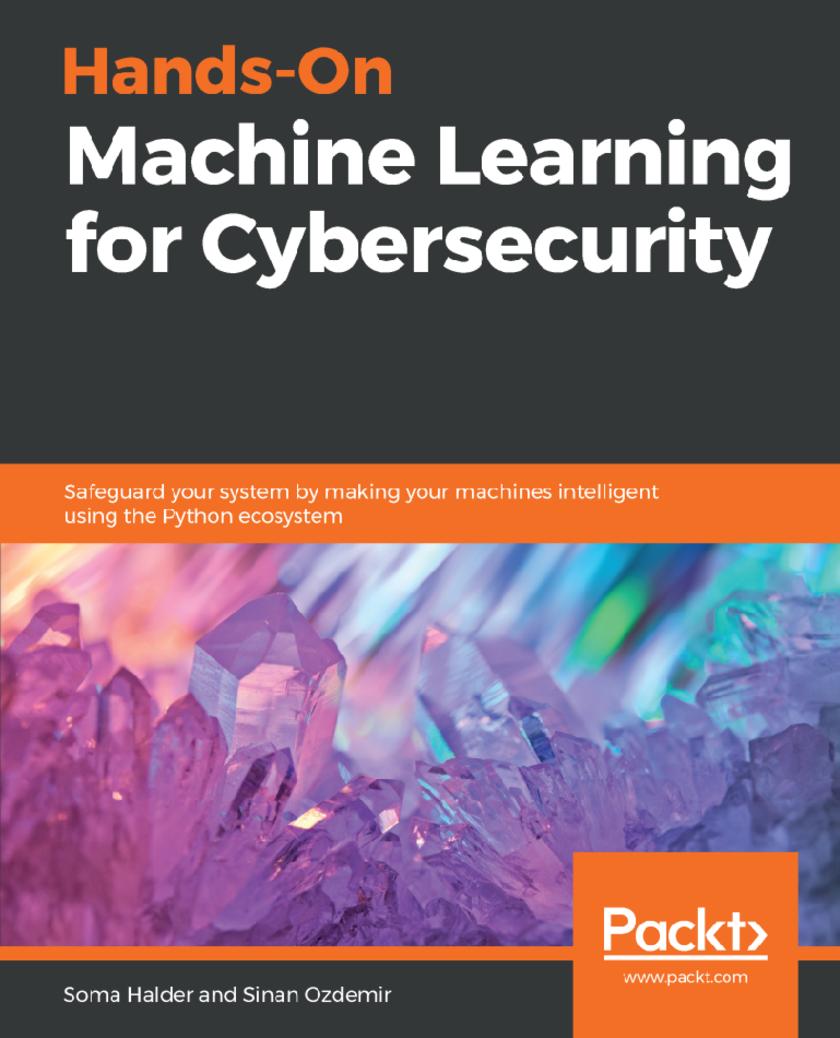
Hands-On Machine Learning for Cybersecurity
¥81.74
Get into the world of smart data security using machine learning algorithms and Python libraries Key Features *Learn machine learning algorithms and cybersecurity fundamentals *Automate your daily workflow by applying use cases to many facets of security *Implement smart machine learning solutions to detect various cybersecurity problems Book Description Cyber threats today are one of the costliest losses that an organization can face. In this book, we use the most efficient tool to solve the big problems that exist in the cybersecurity domain. The book begins by giving you the basics of ML in cybersecurity using Python and its libraries. You will explore various ML domains (such as time series analysis and ensemble modeling) to get your foundations right. You will implement various examples such as building system to identify malicious URLs, and building a program to detect fraudulent emails and spam. Later, you will learn how to make effective use of K-means algorithm to develop a solution to detect and alert you to any malicious activity in the network. Also learn how to implement biometrics and fingerprint to validate whether the user is a legitimate user or not. Finally, you will see how we change the game with TensorFlow and learn how deep learning is effective for creating models and training systems What you will learn *Use machine learning algorithms with complex datasets to implement cybersecurity concepts *Implement machine learning algorithms such as clustering, k-means, and Naive Bayes to solve real-world problems *Learn to speed up a system using Python libraries with NumPy, Scikit-learn, and CUDA *Understand how to combat malware, detect spam, and fight financial fraud to mitigate cyber crimes *Use TensorFlow in the cybersecurity domain and implement real-world examples *Learn how machine learning and Python can be used in complex cyber issues Who this book is for This book is for the data scientists, machine learning developers, security researchers, and anyone keen to apply machine learning to up-skill computer security. Having some working knowledge of Python and being familiar with the basics of machine learning and cybersecurity fundamentals will help to get the most out of the book
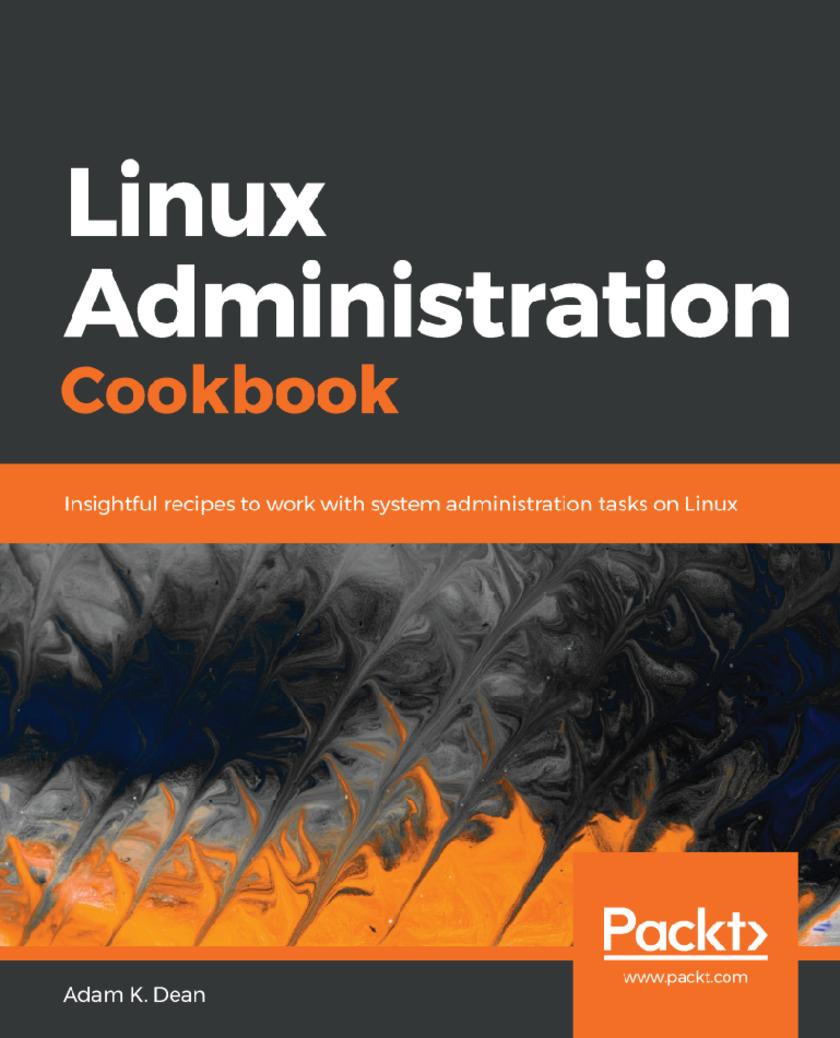
Linux Administration Cookbook
¥81.74
Over 100 recipes to get up and running with the modern Linux administration ecosystem Key Features *Understand and implement the core system administration tasks in Linux *Discover tools and techniques to troubleshoot your Linux system *Maintain a healthy system with good security and backup practices Book Description Linux is one of the most widely used operating systems among system administrators,and even modern application and server development is heavily reliant on the Linux platform. The Linux Administration Cookbook is your go-to guide to get started on your Linux journey. It will help you understand what that strange little server is doing in the corner of your office, what the mysterious virtual machine languishing in Azure is crunching through, what that circuit-board-like thing is doing under your office TV, and why the LEDs on it are blinking rapidly. This book will get you started with administering Linux, giving you the knowledge and tools you need to troubleshoot day-to-day problems, ranging from a Raspberry Pi to a server in Azure, while giving you a good understanding of the fundamentals of how GNU/Linux works. Through the course of the book, you’ll install and configure a system, while the author regales you with errors and anecdotes from his vast experience as a data center hardware engineer, systems administrator, and DevOps consultant. By the end of the book, you will have gained practical knowledge of Linux, which will serve as a bedrock for learning Linux administration and aid you in your Linux journey. What you will learn *Install and manage a Linux server, both locally and in the cloud *Understand how to perform administration across all Linux distros *Work through evolving concepts such as IaaS versus PaaS, containers, and automation *Explore security and configuration best practices *Troubleshoot your system if something goes wrong *Discover and mitigate hardware issues, such as faulty memory and failing drives Who this book is for If you are a system engineer or system administrator with basic experience of working with Linux, this book is for you.
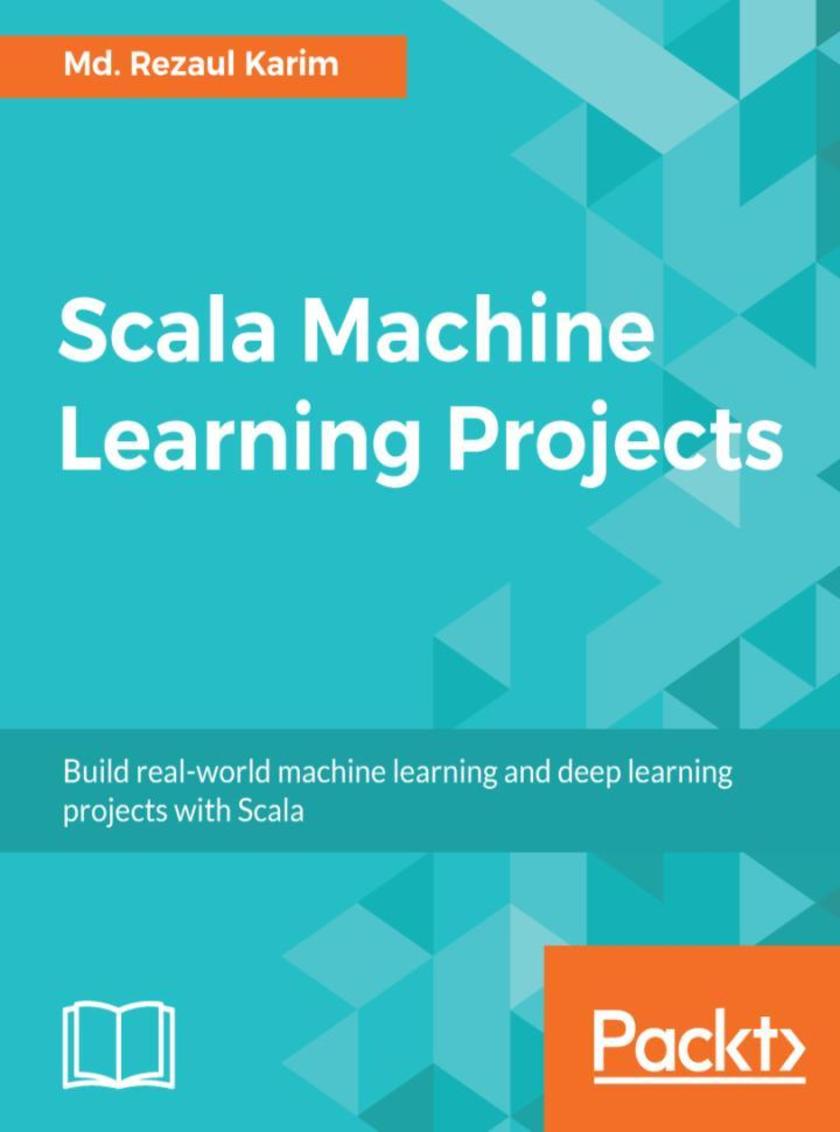
Scala Machine Learning Projects
¥81.74
Powerful smart applications using deep learning algorithms to dominate numerical computing, deep learning, and functional programming. About This Book ? Explore machine learning techniques with prominent open source Scala libraries such as Spark ML, H2O, MXNet, Zeppelin, and DeepLearning4j ? Solve real-world machine learning problems by delving complex numerical computing with Scala functional programming in a scalable and faster way ? Cover all key aspects such as collection, storing, processing, analyzing, and evaluation required to build and deploy machine models on computing clusters using Scala Play framework. Who This Book Is For If you want to leverage the power of both Scala and Spark to make sense of Big Data, then this book is for you. If you are well versed with machine learning concepts and wants to expand your knowledge by delving into the practical implementation using the power of Scala, then this book is what you need! Strong understanding of Scala Programming language is recommended. Basic familiarity with machine Learning techniques will be more helpful. What You Will Learn ? Apply advanced regression techniques to boost the performance of predictive models ? Use different classification algorithms for business analytics ? Generate trading strategies for Bitcoin and stock trading using ensemble techniques ? Train Deep Neural Networks (DNN) using H2O and Spark ML ? Utilize NLP to build scalable machine learning models ? Learn how to apply reinforcement learning algorithms such as Q-learning for developing ML application ? Learn how to use autoencoders to develop a fraud detection application ? Implement LSTM and CNN models using DeepLearning4j and MXNet In Detail Machine learning has had a huge impact on academia and industry by turning data into actionable information. Scala has seen a steady rise in adoption over the past few years, especially in the fields of data science and analytics. This book is for data scientists, data engineers, and deep learning enthusiasts who have a background in complex numerical computing and want to know more hands-on machine learning application development. If you're well versed in machine learning concepts and want to expand your knowledge by delving into the practical implementation of these concepts using the power of Scala, then this book is what you need! Through 11 end-to-end projects, you will be acquainted with popular machine learning libraries such as Spark ML, H2O, DeepLearning4j, and MXNet. At the end, you will be able to use numerical computing and functional programming to carry out complex numerical tasks to develop, build, and deploy research or commercial projects in a production-ready environment. Style and approach Leverage the power of machine learning and deep learning in different domains, giving best practices and tips from a real world case studies and help you to avoid pitfalls and fallacies towards decision making based on predictive analytics with ML models.
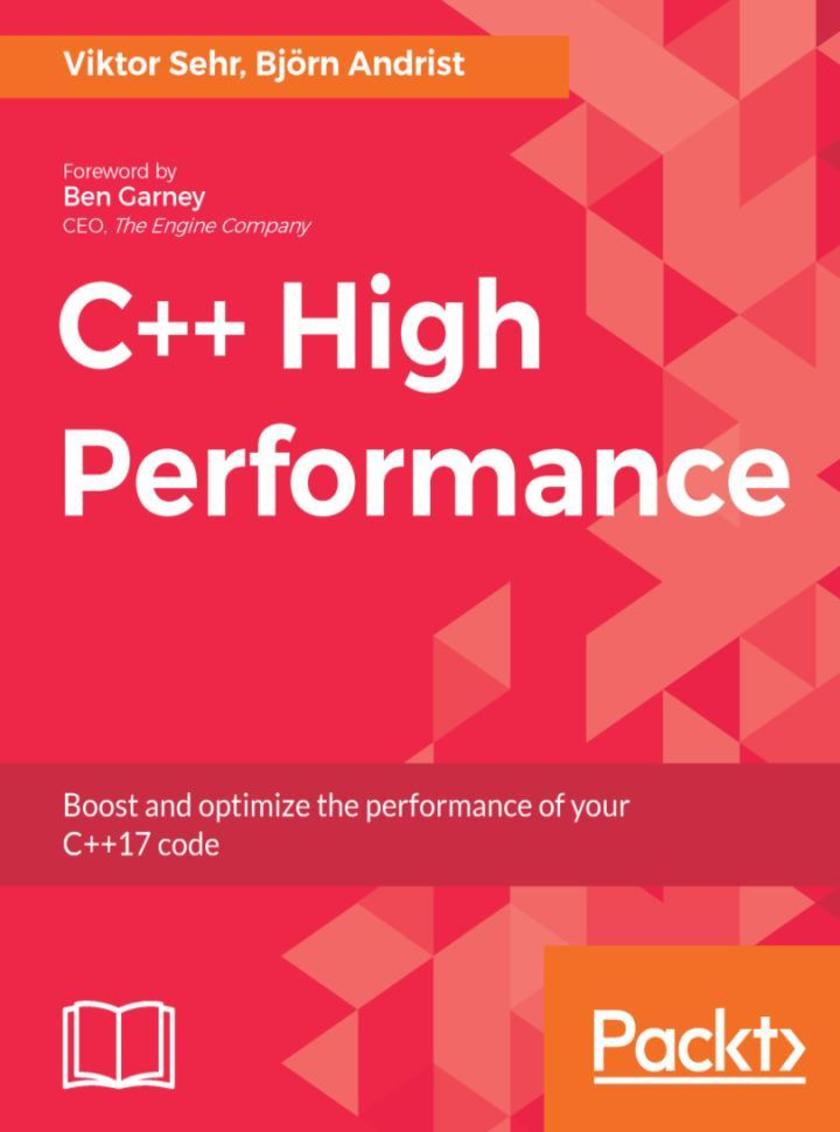
C++ High Performance
¥81.74
Write code that scales across CPU registers, multi-core, and machine clusters About This Book ? Explore concurrent programming in C++ ? Identify memory management problems ? Use SIMD and STL containers for performance improvement Who This Book Is For If you're a C++ developer looking to improve the speed of your code or simply wanting to take your skills up to the next level, then this book is perfect for you. What You Will Learn ? Find out how to use exciting new tools that will help you improve your code ? Identify bottlenecks to optimize your code ? Develop applications that utilize GPU computation ? Reap the benefits of concurrent programming ? Write code that can protect against application errors using error handling ? Use STL containers and algorithms effciently ? Extend your toolbox with Boost containers ? Achieve effcient memory management by using custom memory allocators In Detail C++ is a highly portable language and can be used to write complex applications and performance-critical code. It has evolved over the last few years to become a modern and expressive language. This book will guide you through optimizing the performance of your C++ apps by allowing them to run faster and consume fewer resources on the device they're running on. The book begins by helping you to identify the bottlenecks in C++. It then moves on to measuring performance, and you'll see how this affects the way you write code. Next, you'll see the importance of data structure optimization and how it can be used efficiently. After that, you'll see which algorithm should be used to achieve faster execution, followed by how to use STL containers. Moving on, you'll learn how to improve memory management in C++. You'll get hands on experience making use of multiple cores to enable more efficient and faster execution. The book ends with a brief overview of utilizing the capabilities of your GPU by using Boost Compute and OpenCL. Style and approach This easy-to-follow guide is full of examples and self-sufficient code snippets that help you with high performance programming with C++. You’ll get your hands dirty with this all-inclusive guide that uncovers hidden performance improvement areas for any C++ code.
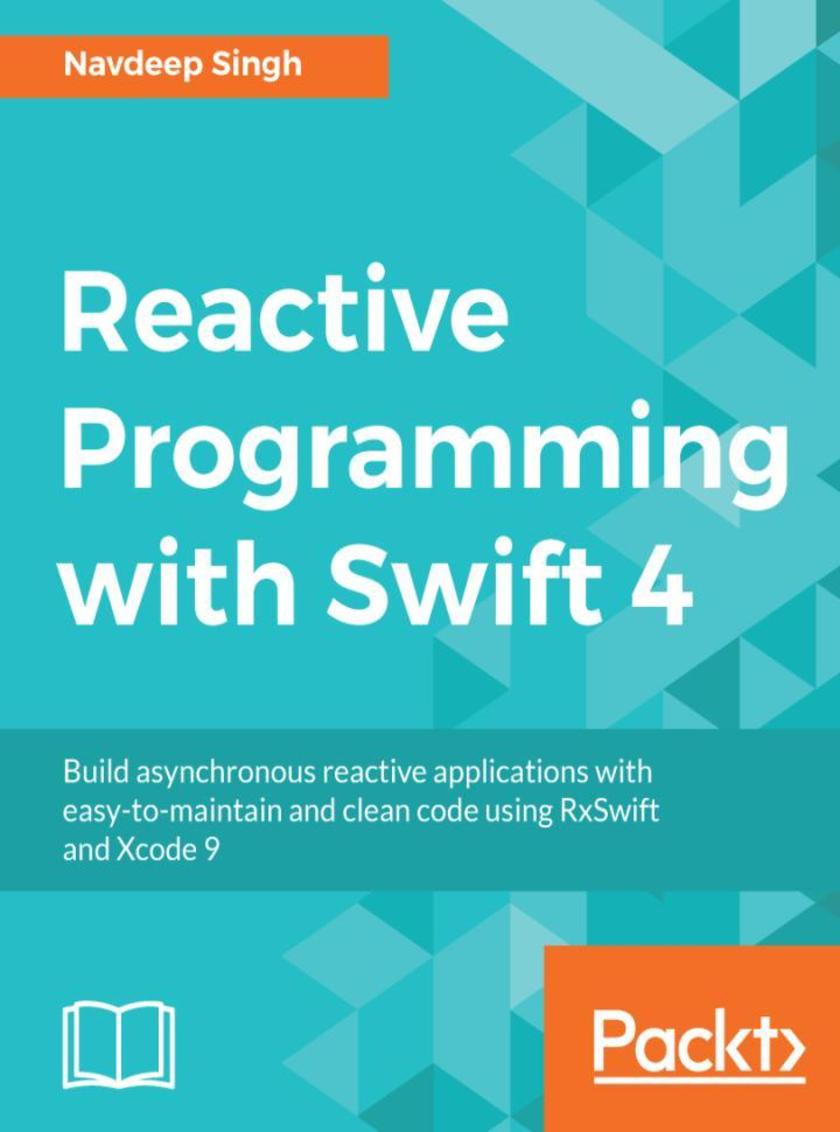
Reactive Programming with Swift 4
¥81.74
Learn how to solve blocking user experience and build event based reactive applications with Swift. About This Book ? Build fast and scalable apps with RxSwift ? Apply reactive programming to solve complex problems and build efficient programs with reactive user interfaces ? Take expressiveness, scalability, and maintainability of your Swift code to the next level with this practical guide Who This Book Is For This book is for the developers who are familiar with Swift and iOS application development and are looking out to reduce the complexity of their apps. Prior experience of reactive programming is not necessary. What You Will Learn ? Understand the practical benefits of Rx on a mobile platform ? Explore the building blocks of Rx, and Rx data flows with marble diagrams ? Learn how to convert an existing code base into RxSwift code base ? Learn how to debug and test your Rx Code ? Work with Playgrounds to transform sequences by filtering them using map, flatmap and other operators ? Learn how to combine different operators to work with Events in a more controlled manner. ? Discover RxCocoa and convert your simple UI elements to Reactive components ? Build a complete RxSwift app using MVVM as design pattern In Detail RxSwift belongs to a large family of Rx implementations in different programming languages that share almost identical syntax and semantics. Reactive approach will help you to write clean, cohesive, resilient, scalable, and maintainable code with highly configurable behavior. This book will introduce you to the world of reactive programming, primarily focusing on mobile platforms. It will tell how you can benefit from using RxSwift in your projects, existing or new. Further on, the book will demonstrate the unbelievable ease of configuring asynchronous behavior and other aspects of the app that are traditionally considered to be hard to implement and maintain. It will explain what Rx is made of, and how to switch to reactive way of thinking to get the most out of it. Also, test production code using RxTest and the red/ green approach. Finally, the book will dive into real-world recipes and show you how to build a real-world app by applying the reactive paradigm. By the end of the book, you’ll be able to build a reactive swift application by leveraging all the concepts this book takes you through. Style and approach This book is a definite tutorial in FRP with Swift filled with well-described examples.

Scala Reactive Programming
¥81.74
Build fault-tolerant, robust, and distributed applications in Scala About This Book ? Understand and use the concepts of reactive programming to build distributed systems running on multiple nodes. ? Learn how reactive architecture reduces complexity throughout the development process. ? Get to grips with functional reactive programming and Reactive Microservices. Who This Book Is For This book is for Scala developers who would like to build fault-tolerant, scalable distributed systems. No knowledge of Reactive programming is required. What You Will Learn ? Understand the fundamental principles of Reactive and Functional programming ? Develop applications utilizing features of the Akka framework ? Explore techniques to integrate Scala, Akka, and Play together ? Learn about Reactive Streams with real-time use cases ? Develop Reactive Web Applications with Play, Scala, Akka, and Akka Streams ? Develop and deploy Reactive microservices using the Lagom framework and ConductR In Detail Reactive programming is a scalable, fast way to build applications, and one that helps us write code that is concise, clear, and readable. It can be used for many purposes such as GUIs, robotics, music, and others, and is central to many concurrent systems. This book will be your guide to getting started with Reactive programming in Scala. You will begin with the fundamental concepts of Reactive programming and gradually move on to working with asynchronous data streams. You will then start building an application using Akka Actors and extend it using the Play framework. You will also learn about reactive stream specifications, event sourcing techniques, and different methods to integrate Akka Streams into the Play Framework. This book will also take you one step forward by showing you the advantages of the Lagom framework while working with reactive microservices. You will also learn to scale applications using multi-node clusters and test, secure, and deploy your microservices to the cloud. By the end of the book, you will have gained the knowledge to build robust and distributed systems with Scala and Akka. Style and approach The book takes a pragmatic approach, showing you how to build a scalable distributed system using Scala and Akka.
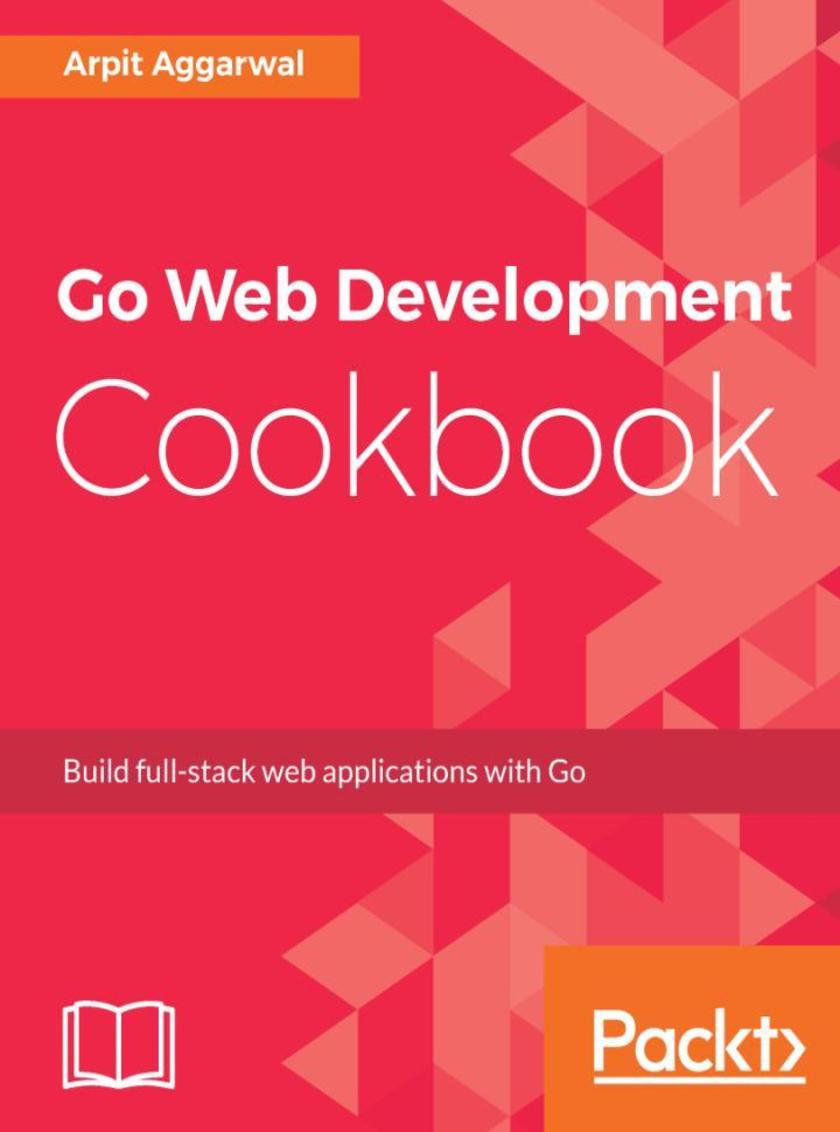
Go Web Development Cookbook
¥81.74
86 recipes on how to build fast, scalable, and powerful web services and applications with Go About This Book ? Become proficient in RESTful web services ? Build scalable, high-performant web applications in Go ? Get acquainted with Go frameworks for web development Who This Book Is For This book is for Go developers interested in learning how to use Go to build powerful web applications. A background in web development is expected. What You Will Learn ? Create a simple HTTP and TCP web server and understand how it works ? Explore record in a MySQL and MongoDB database ? Write and consume RESTful web service in Go ? Invent microservices in Go using Micro – a microservice toolkit ? Create and Deploy the Beego application with Nginx ? Deploy Go web application and Docker containers on an AWS EC2 instance In Detail Go is an open source programming language that is designed to scale and support concurrency at the language level. This gives you the liberty to write large concurrent web applications with ease. From creating web application to deploying them on Amazon Cloud Services, this book will be your one-stop guide to learn web development in Go. The Go Web Development Cookbook teaches you how to create REST services, write microservices, and deploy Go Docker containers. Whether you are new to programming or a professional developer, this book will help get you up to speed with web development in Go. We will focus on writing modular code in Go; in-depth informative examples build the base, one step at a time. You will learn how to create a server, work with static files, SQL, NoSQL databases, and Beego. You will also learn how to create and secure REST services, and create and deploy Go web application and Go Docker containers on Amazon Cloud Services. By the end of the book, you will be able to apply the skills you've gained in Go to create and explore web applications in any domain. Style and approach This book helps you learn core Go concepts faster by taking a recipe-based approach.

Java 9 Dependency Injection
¥81.74
Create clean code with Dependency Injection principles About This Book ? Use DI to make your code loosely coupled to manage and test your applications easily on Spring 5 and Google Guice ? Learn the best practices and methodologies to implement DI ? Write more maintainable Java code by decoupling your objects from their implementations Who This Book Is For This book is for Java developers who would like to implement DI in their application. Prior knowledge of the Spring and Guice frameworks and Java programming is assumed. What You Will Learn ? Understand the benefits of DI and fo from a tightly coupled design to a cleaner design organized around dependencies ? See Java 9’s new features and modular framework ? Set up Guice and Spring in an application so that it can be used for DI ? Write integration tests for DI applications ? Use scopes to handle complex application scenarios ? Integrate any third-party library in your DI-enabled application ? Implement Aspect-Oriented Programming to handle common cross-cutting concerns such as logging, authentication, and transactions ? Understand IoC patterns and anti-patterns in DI In Detail Dependency Injection (DI) is a design pattern that allows us to remove the hard-coded dependencies and make our application loosely coupled, extendable, and maintainable. We can implement DI to move the dependency resolution from compile-time to runtime. This book will be your one stop guide to write loosely coupled code using the latest features of Java 9 with frameworks such as Spring 5 and Google Guice. We begin by explaining what DI is and teaching you about IoC containers. Then you’ll learn about object compositions and their role in DI. You’ll find out how to build a modular application and learn how to use DI to focus your efforts on the business logic unique to your application and let the framework handle the infrastructure work to put it all together. Moving on, you’ll gain knowledge of Java 9’s new features and modular framework and how DI works in Java 9. Next, we’ll explore Spring and Guice, the popular frameworks for DI. You’ll see how to define injection keys and configure them at the framework-specific level. After that, you’ll find out about the different types of scopes available in both popular frameworks. You’ll see how to manage dependency of cross-cutting concerns while writing applications through aspect-oriented programming. Towards the end, you’ll learn to integrate any third-party library in your DI-enabled application and explore common pitfalls and recommendations to build a solid application with the help of best practices, patterns, and anti-patterns in DI. Style and approach This book will take an easy-to-understand, step-by-step approach providing hands-on examples at every stage.
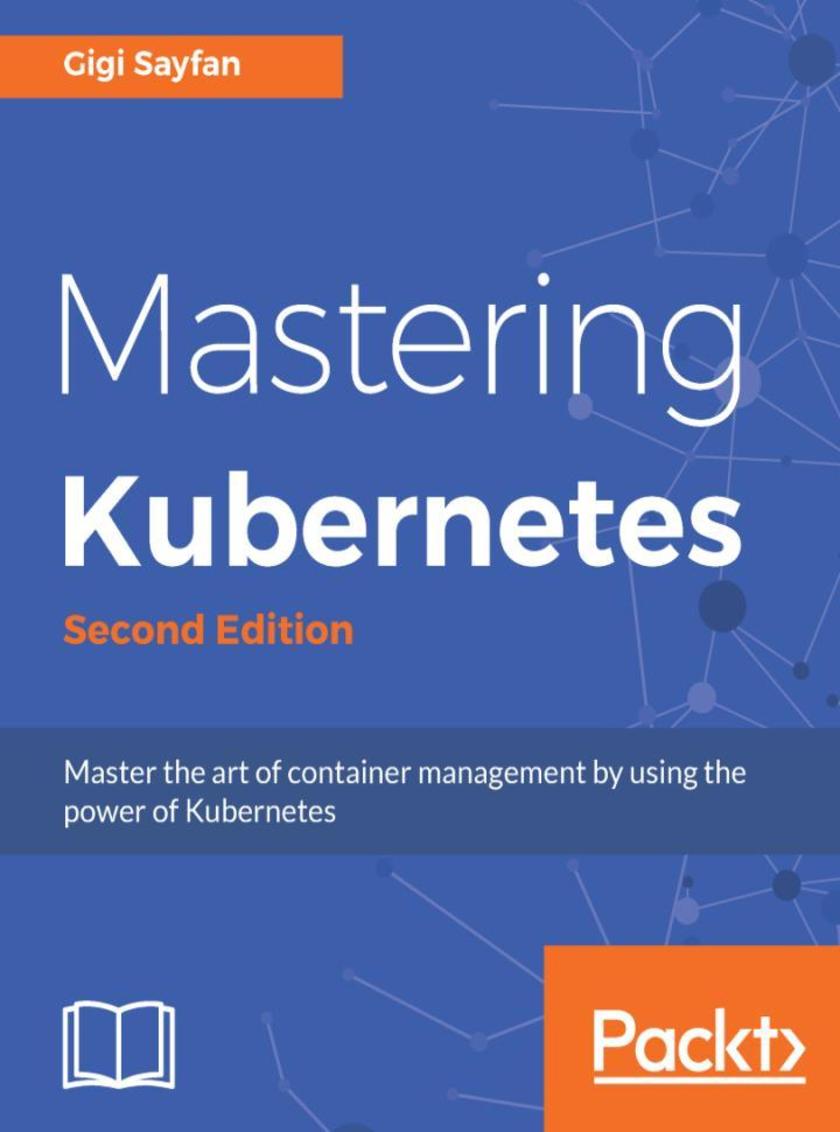
Mastering Kubernetes
¥81.74
Exploit design, deployment, and management of large-scale containers About This Book ? Explore the latest features available in Kubernetes 1.10 ? Ensure that your clusters are always available, scalable, and up to date ? Master the skills of designing and deploying large clusters on various cloud platforms Who This Book Is For Mastering Kubernetes is for you if you are a system administrator or a developer who has an intermediate understanding of Kubernetes and wish to master its advanced features. Basic knowledge of networking would also be helpful. In all, this advanced-level book provides a smooth pathway to mastering Kubernetes. What You Will Learn ? Architect a robust Kubernetes cluster for long-time operation ? Discover the advantages of running Kubernetes on GCE, AWS, Azure, and bare metal ? Understand the identity model of Kubernetes, along with the options for cluster federation ? Monitor and troubleshoot Kubernetes clusters and run a highly available Kubernetes ? Create and configure custom Kubernetes resources and use third-party resources in your automation workflows ? Enjoy the art of running complex stateful applications in your container environment ? Deliver applications as standard packages In Detail Kubernetes is an open source system that is used to automate the deployment, scaling, and management of containerized applications. If you are running more containers or want automated management of your containers, you need Kubernetes at your disposal. To put things into perspective, Mastering Kubernetes walks you through the advanced management of Kubernetes clusters. To start with, you will learn the fundamentals of both Kubernetes architecture and Kubernetes design in detail. You will discover how to run complex stateful microservices on Kubernetes including advanced features such as horizontal pod autoscaling, rolling updates, resource quotas, and persistent storage backend. Using real-world use cases, you will explore the options for network configuration, and understand how to set up, operate, and troubleshoot various Kubernetes networking plugins. In addition to this, you will get to grips with custom resource development and utilization in automation and maintenance workflows. To scale up your knowledge of Kubernetes, you will encounter some additional concepts based on the Kubernetes 1.10 release, such as Promethus, Role-based access control, API aggregation, and more. By the end of this book, you’ll know everything you need to graduate from intermediate to advanced level of understanding Kubernetes. Style and approach Delving into the design of the Kubernetes platform, the reader will be exposed to Kubernetes advanced features and best practices. This advanced-level book will provide a pathway to mastering Kubernetes.

Hands-On GUI Programming with C++ and Qt5
¥81.74
Create visually appealing and feature-rich applications by using Qt 5 and the C++ language About This Book ? Explore Qt 5’s powerful features to easily design your GUI application ? Leverage Qt 5 to build attractive cross-platform applications ? Work with Qt modules for multimedia, networking, and location, to customize your Qt applications Who This Book Is For This book will appeal to developers and programmers who would like to build GUI-based applications. Basic knowledge of C++ is necessary and the basics of Qt would be helpful. What You Will Learn ? Implement tools provided by Qt 5 to design a beautiful GUI ? Understand different types of graphs and charts supported by Qt 5 ? Create a web browser using the Qt 5 WebEngine module and web view widget ? Connect to the MySQL database and display data obtained from it onto the Qt 5 GUI ? Incorporate the Qt 5 multimedia and networking module in your application ? Develop Google Map-like applications using Qt 5’s location module ? Discover cross-platform development by exporting the Qt 5 application to different platforms ? Uncover the secrets behind debugging Qt 5 and C++ applications In Detail Qt 5, the latest version of Qt, enables you to develop applications with complex user interfaces for multiple targets. It provides you with faster and smarter ways to create modern UIs and applications for multiple platforms. This book will teach you to design and build graphical user interfaces that are functional, appealing, and user-friendly. In the initial part of the book, you will learn what Qt 5 is and what you can do with it. You will explore the Qt Designer, discover the different types of widgets generally used in Qt 5, and then connect your application to the database to perform dynamic operations. Next, you will be introduced to Qt 5 chart which allows you to easily render different types of graphs and charts and incorporate List View Widgets in your application. You will also work with various Qt modules, like QtLocation, QtWebEngine, and the networking module through the course of the book. Finally, we will focus on cross-platform development with QT 5 that enables you to code once and run it everywhere, including mobile platforms. By the end of this book, you will have successfully learned about high-end GUI applications and will be capable of building many more powerful, cross-platform applications. Style and approach This is a comprehensive guide that explores the essential Qt features and implement them in building real-world cross-platform GUI applications
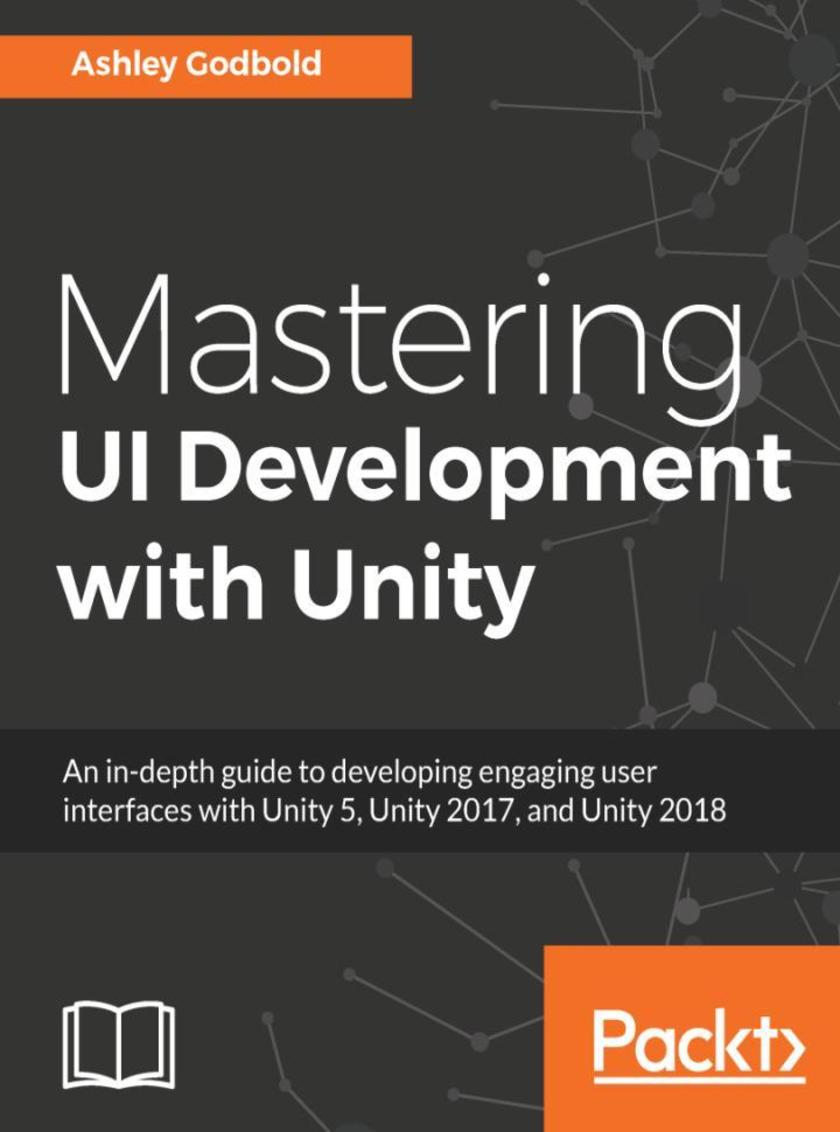
Mastering UI Development with Unity
¥81.74
Master Game UI system by creating captivating user interface components with Unity 5 through Unity 2018 and C#. Learn about UI texts, images, world space UI, mobile-specific UI and much more. About This Book ? Develop a game UI with both technical and aesthetic considerations ? Use all the UI elements provided by Unity's UI system ? Step-by-step examples of creating user interface components in the top game genres Who This Book Is For This book is for anyone keen to improve their games via a great user interface with Unity's UI system. If you're looking for a book that explains how to develop specific user interfaces or that thoroughly explains how each of the individual Unity components work, this book is for you. What You Will Learn ? Design principles and patterns for laying out elements in your UI ? Techniques that allow your UI to scale appropriately in different resolutions ? How to use automatic layouts to streamline your UI building process ? Properties of the Event System and how to appropriately hook events to your UI elements ? Access the components and properties of UI elements via code ? Implement all of Unity's built-in UI elements as well as those provided by TextMeshPro ? Develop key UI components that are popularly used in multiple game genres ? Add visual flare to user interfaces with the use of animation and particle effects ? Create a UI that displays in the Screen Space as well as World Space In Detail A functional UI is an important component for player interaction in every type of video game. Along with imparting crucial statistical information to the player, the UI is also the window through which the player engages with the world established by the game. Unity's tools give you the opportunity to create complex and attractive UIs to make your game stand out. This book helps you realize the full potential of Unity's powerful tools to create the best UI for your games by walking you through the creation of myriad user interface components. Learn how to create visually engaging heads-up-displays, pause menus, health bars, circular progress bars, animated menus, and more. This book not only teaches how to lay out visual elements, but also how to program these features and implement them across multiple games of varying genres. While working through the examples provided, you will learn how to develop a UI that scales to multiple screen resolutions, so your game can be released on multiple platforms with minimal changes. Style and approach The book walks you through the process of creating many different user interface components, by describing each UI component and property thoroughly and then providing step-by-step examples of its implementation. You will not only learn how to lay out visual elements, but you will also learn how to program for these features and hook them in to your game. The examples provided in the book can be reused for many other products.




 购物车
购物车 个人中心
个人中心



